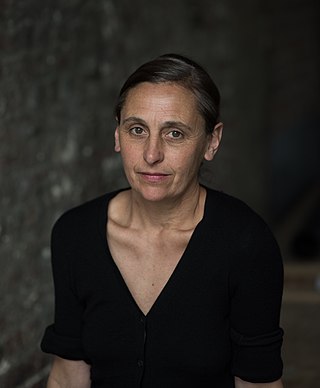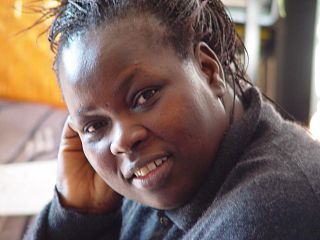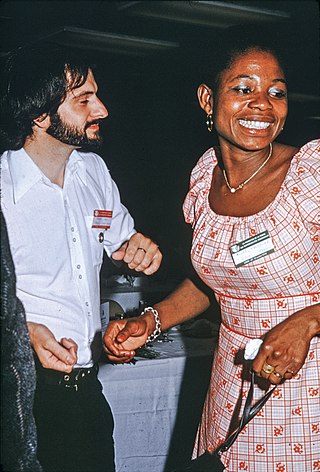Related Research Articles

Léopold Sédar Senghor was a Senegalese poet, politician and cultural theorist who was the first president of Senegal (1960–80).

Maurice Béjart was a French-born dancer, choreographer and opera director who ran the Béjart Ballet Lausanne in Switzerland. He developed a popular expressionistic form of modern ballet, talking vast themes. He was awarded Swiss citizenship posthumously.

Boubacar Boris Diop is a Senegalese novelist, journalist and screenwriter. His best known work, Murambi, le livre des ossements, is the fictional account of a notorious massacre during the Rwandan genocide of 1994. He is also the founder of Sol, an independent newspaper in Senegal, and the author of many books, political works, plays and screenplays. Doomi Golo (2003) is one of the only novels ever written in Wolof; it deals with the life of a Senegalese Wolof family. The book was published by Papyrus Afrique, Dakar.

Anne Teresa, Baroness De Keersmaeker is a contemporary dance choreographer. The dance company constructed around her, Rosas, was in residence at La Monnaie in Brussels from 1992 to 2007.
Urban Bush Women (UBW), founded in 1984 by Jawole Willa Jo Zollar, is a Brooklyn, New York-based non-profit dance company and professional African-American women's dance company. The ensemble performs choreography by Zollar and several other choreographers, often with a focus on the experiences of women of African descent.
Lamine Diakhate was an author, poet and literary critic of the négritude school and has served his country as a politician and diplomat.
Demba Diop was a Senegalese politician. He served as Minister of Youth and Sport under President Léopold Sédar Senghor and was Mayor of Mbour from 1966 until his assassination.
Paulin Soumanou Vieyra was a Dahomeyan/Senegalese film director and historian. As he lived in Senegal after the age of 10, he is more associated with that nation.
Kre M’Baye, also known as Amadou Kre M’Baye, was a Senegalese artist and art instructor.
The Dakar Biennale 1990 is the first edition of the Dakar Biennale organised in Dakar in Senegal in 1990 and focused on literature.
Angèle Diabang Brener is a Senegalese screenwriter, director and film producer.

Michèle Magema is a Congolese-French video, performance, and photography artist. She currently resides in Nevers.
The Mudra Afrique was a contemporary dance school founded in Dakar, Senegal in 1977 by Léopold Sédar Senghor and Maurice Béjart, based on a Pan-African philosophy of uniting Africans through the commonalities in the different ways of artistic self-expression throughout the continent, thus creating a universal artistic culture that challenges the dominance of European dance and artistry. The school closed in 1983 but a significant number of its students went on to successful international careers., such as the Burkinabe choreographer, dancer, actor and artist Irene Tassembedo, Carole Alexis choreographer and Director of Ballet des Amériques company and conservatory located in New York and Djoniba Mouflet Founder and Director of the Djoniba Dance and Drum center in New York. Mudra Afrique played a crucial role in preparing the basis for contemporary African dance by training the first generation of “modern and classical” African dancers according to international artistic standards.
P.A.R.T.S. - Performing Arts Research and Training Studios is an international school for contemporary dance that is located in Vorst, one of the 19 municipalities located in the Brussels-Capital Region of Belgium.

Irène Tassembédo is a dancer, choreographer and actress from Burkina Faso.
Papa Ibra Tall (1935–2015) was a tapestry weaver, painter, and illustrator known for his role in the École de Dakar.
Aminata Diaw Cissé was a Senegalese lecturer and political philosopher who taught at the Cheikh Anta Diop University (UCAD). Influenced by Jean-Jacques Rousseau and her academia background, she wrote about citizenship, civil society, democracy, development, ethnicity, gender, globalisation, human rights, identity, nationality and the state in an African and Senegalese context by using a political insight. Diaw worked for the Council for the Development of Social Science Research in Africa (CODESRIA), Bellagio Study and Conference Center of the Rockfeller Foundation, National UNESCO Sub-Commission on Social Sciences and Humanities, West African Research Association, the National UNESCO Sub-Commission on Social Sciences and Humanities and the Philosophical and Epistemological Research Center of the Doctoral School Studies.

Toubab Dialo is a village in Senegal, located on the Petite Côte, south of Dakar, between Bargny, Senegal and Popenguine. It is part of the rural community of Yenne, the department of Rufisque and the region of Dakar.
Younousse Sèye is a Senegalese artist and actress. Considered Senegal's first woman painter, she is best known for her mixed-media works incorporating cowrie shells. Having no formal training in either visual art or acting, she achieved success in the post-independence Dakar art scene and appeared in several major films by the Senegalese director Ousmane Sembène.

Flora Théfaine is a Togolese-French choreographer. Considered a pioneer of African contemporary dance, she is the founder of the dance corps Compagnie Kossiwa.
References
- Akyeampong, Emmanuel Kwaku; Gates, Henry Louis (2012). Dictionary of African Biography. Vol. 6. Oxford: Oxford University Press. ISBN 978-0-195382-075.